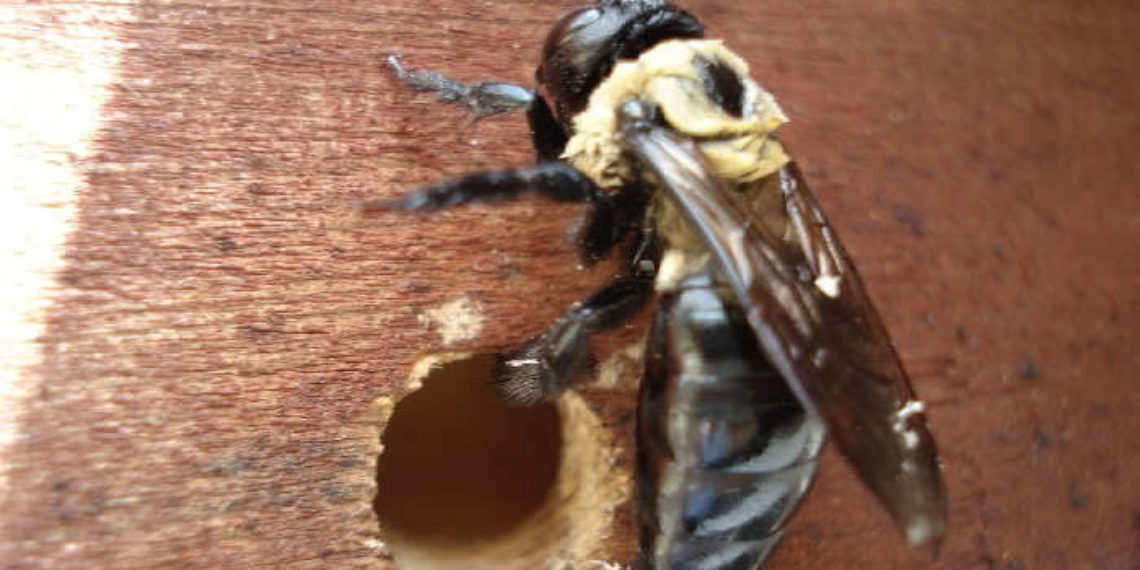Mitigate Carpenter Bee Damage
Carpenter bees are harmless creatures, except for their habit of boring half inch wide tunnels into exposed wood on homes and other structures. Carpenter bees look like bumblebees, but with shiny, black bottoms. They are most active in April and May when they emerge from overwintering to mate and lay eggs. Male bees do not sting, but they behave aggressively during mating season, often flying into people and other objects. Female bees only sting when provoked. Females are typically very busy boring holes and laying eggs in the tunnels. Each egg is sealed off in its own chamber with a ball of pollen for larvae to feed off. Five to seven weeks later, the new bees emerge, just in time to pollinate our summer flowers. Come fall, the bees return to the abandoned tunnels and hibernate for the winter. Controlling carpenter bees requires an understanding of the bee’s lifecycle and a bit of due diligence.
Step 1: Prevention is the best defense. Bees like exposed wood. Use a good quality caulk or wood filler to seal up cracks and crevices that are attractive to wood boring insects. Use paint or another exterior wood finish to coat exposed surfaces.
Step 2: Discourage bee activity around the home by spraying active tunnels with non-toxic almond oil or citrus oil. Playing loud music may also help reduce bee activity.
Step 3: To kill these gentle pollinators in the early spring, dust the inside of each wooden tunnel with a powdered pesticide, such as carbaryl (Sevin Dust), permethrin (Eight Dust), disodium octaborate tetrahydrate (Termite Prufe) or boric acid (Roach Prufe). As the bees enter or exit the tunnel they will be exposed to the powder. It may be necessary to dust the tunnel several times to kill both the adult and newly hatched bees in one season.
Step 4: Alternatively, tunnel openings can be packed with diatomaceous earth in the spring. The bees will die after they emerge through the powder.
Step 5: Regardless of previous treatment choices, damage can be repaired after the bees have emerged in late summer. Dust the tunnel openings with Termite Prufe or Roach Prufe. Seal each tunnel shut by driving a two inch piece of ½” diameter wooden dowel rod into the hole. Top coat the dowel with wood putty or caulk. If necessary, paint or stain the patched area to match the surrounding wood.
